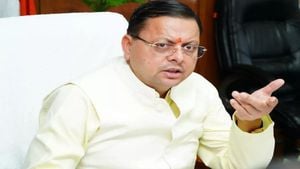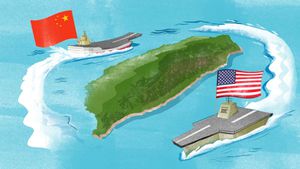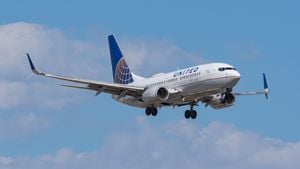Tesla's recent "We, Robot" event promised groundbreaking innovations and showcased its lineup of autonomous vehicles, but left attendees and industry analysts wanting more. The star of the evening, Elon Musk, revealed Tesla's much-anticipated Cybercab, also referred to as the Robotaxi, alongside the debut of the Robovan—another futuristic vehicle. While the designs were slick, many left the event weighing the lack of substantial information against the buzz surrounding these technological marvels.
Held at the Warner Bros. backlot in Burbank, California, the atmosphere was reminiscent of past Tesla launches filled with excitement and optimism. Attendees were treated to sleek designs presented by Tesla's chief designer, Franz von Holzhausen, who underscored the thematic elements of the Tesla vision: innovation at the intersection of technology and transportation. Yet, the emphasis on design masked pressing questions about operational capabilities and safety measures.
The Cybercab, distinguished by its futuristic aesthetics—including upward-opening butterfly doors—boasts no steering wheel or pedals. According to Musk, the vehicle aims to offer significantly lower ride costs compared to conventional public transportation, and be up to twenty times safer than human-operated vehicles. Although the vision appears grand and futuristic, practical aspects surrounding its operational framework remain vague. Musk had stated, "There are 20 more like it," referring to the Cybercab, but specifics on production timelines still felt murky.
One of the most thrilling aspects presented was the vehicle's inductive charging technology, eliminating the need for a charging port. Still, Musk left many questions unanswered. How exactly will this charging work? How will the company attain this incredible safety, especially devoid of advanced sensors like LIDAR? The lack of detailed answers left many attendees and analysts intrigued, yet worried about the technological feasibility of such lofty goals.
Unlike rival robotaxi services from Waymo, which are currently operational, Tesla's demonstration primarily featured closed-course rides and promotional video narrations, which have sparked skepticism. Many within the automotive sector noted concern over Tesla’s readiness to compete, especially considering Waymo’s established presence and superior functionality on the road.
While Musk’s optimism and vision shined through during the night, the reality of launching robotaxi services lingers on the distant horizon. During the event, Musk indicated plans to roll out limited robotaxi services starting around 2025, but experts have pointed out the immense technological and regulatory hurdles still to overcome. To successfully transition from traditional driving to full autonomy depends on both technology advancements and public acceptance.
The mood of the event combined hope and reminiscence, where Tesla fans roamed among Optimus robots, throwbacks to Musk’s vision of robots as personal assistants and labor-saving devices. While the robots served drinks and mingled with the audience, Musk hinted at potential commercial applications—the robots could one day function as caregivers, task assistants, and more, placing them within everyday life at accessible price points of $20,000 to $30,000.
While Tesla’s future seems painted with aspirations, industry analysts have pointed to the sense of detachment from reality. Some commentators noted the event had the feel of playing for Tesla's stock price rather than making genuine advancements and showcasing thorough technological progress. The enthusiasm felt at the event contrasted with Musk’s recent behavior, especially after his controversial takeover of Twitter, now named X, raising concerns about misinformation and divisive narratives.
After the event, reactions from Wall Street indicated disappointment—not against Tesla's innovative potential, but the continued failure to deliver tangible results. Stock prices dipped following the announcement, and competitor firms like Uber and Lyft actually saw stock surges amid relief buying, reflecting skepticism over whether Tesla is positioned to fulfill the ambitious expectations set by its CEO.
So what does the future hold for Tesla’s Cybercab? After projecting production might commence around 2026 or later, many are left wondering if these lofty goals could be overshadowed by the technological challenges inherent to building such sophisticated autonomous systems.
With ambitions so high and skepticism running deep, the world will watch closely as Tesla navigates the coming years, grappling with not just the technology but also the realities of human acceptance. Will the Cybercab ever reach its promising destiny, or will it remain just another bright idea on the drawing board? Only time will tell.



